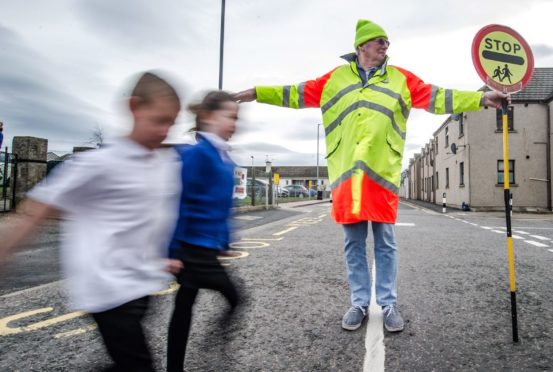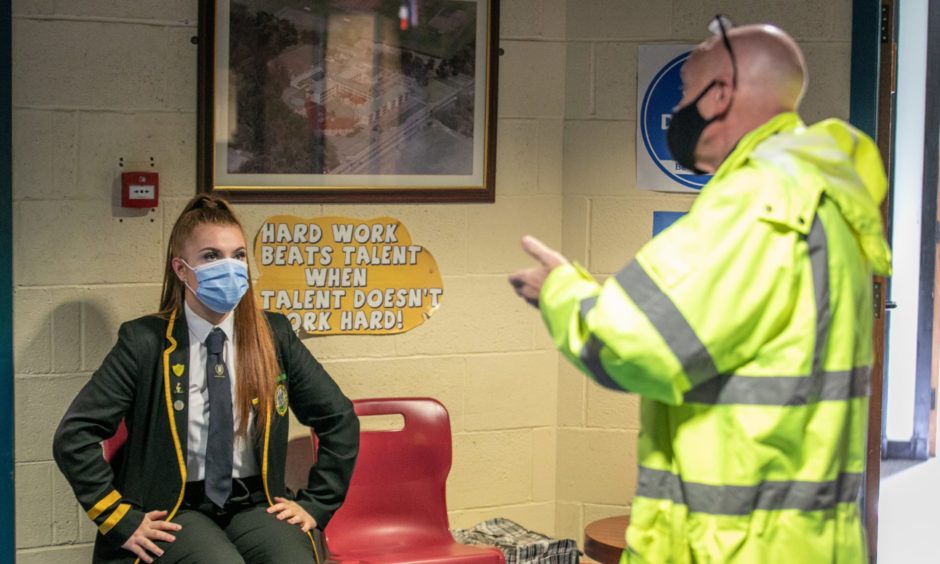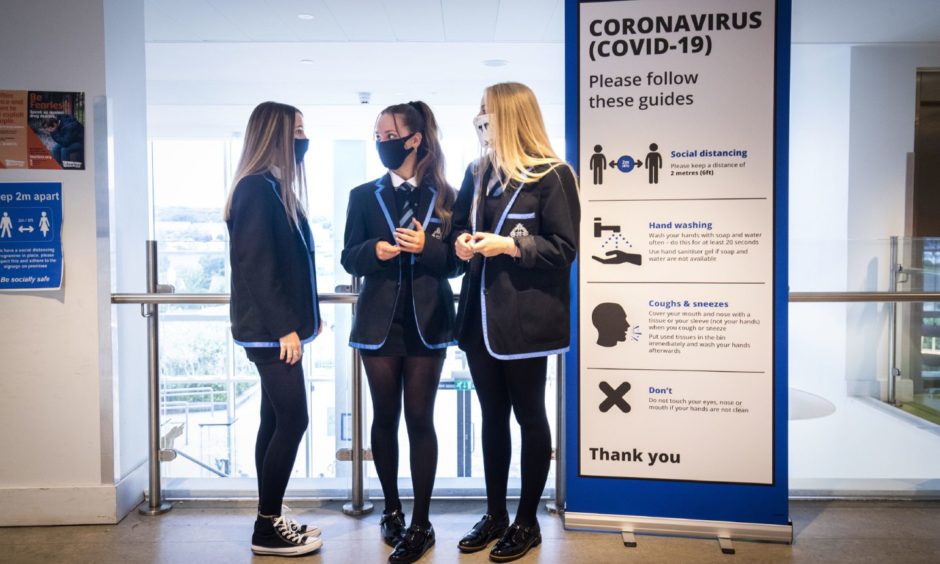Following the First Minister’s confirmation that schools will begin a phased return next week, guidance has been published detailing what this will mean for pupils across Scotland.
The guidance, which was published by the Scottish Government, sets out which pupils will be permitted to return to in-class learning, as well as what it will mean in practice.
It covers everything from how it will impact pupils in composite classes through to the testing of school staff and pupils upon their return.
Details are also given regarding social distancing, as well the use of school transport and the requirement to wear face coverings.
Composite classes
The phased return of schools in Scotland will begin with all pupils in the years P1-3, who will return to full time, in-person schooling from February 22.
While the guidance says this should be “relatively straightforward in many schools”, it notes that it will be less straightforward in those that have composite classes.
It is recommended that where P3/P4 composite classes are in place, it is expected that the class teacher continues to plan for both groups as they are at the moment.
Children in primary three should be taught in school and remote learning should continue for those in P4.
Having P4 children in composite classes in school, the guidance says, “would send mixed messages about which children are returning to school.”
It is also noted that P3 children in P3/P4/P5 classes should also be taught in school and similar arrangements to provide remote support should be put in place for P4 and P5 children in those schools.
Are there any exemptions?
For very small schools, where the entire primary cohort is taught in a single class, the guidance notes there may be insufficient staff to teach P1-P3 in school and P4-P7 remotely.
In this case, it is outlined that the school or local authority can decide to bring the entire cohort back into school from February 22.
However, this should be a last resort. It is advised that where it is possible to provide both in-school (P1-P3) and remote learning (P4-P7) at the same time, that is how these schools should operate.
What about pupils in secondary schools?
From next Monday, senior pupils can return part-time to complete the learning and teaching of critical practical work in relation to qualifications.
Schools must ensure that the number of senior phase learners timetabled in school to undertake practical work at any one time does not exceed 5 to 8% of the secondary school roll.
Under the Scottish Government guidance, these pupils will still be able to go offsite for lunch but will be required to follow the rules in place for wider society, such as wearing a face covering when entering a shop.
It is noted that risk assessments should consider procedures for when children and young people leave and return to school premises, including hand hygiene.
Is social distancing required?
The guidance outlines that two metre distancing should be put in place at the current time between secondary-aged learners.
This applies to all learners in secondary schools including vulnerable children and the children of key workers.
Social distancing requirements in primary schools remain unchanged, such as two metre distancing between adults not from the same household should be maintained.
There should also be two metre distancing between adults and children whenever possible.
The guidance also outlines that “every possible step should be taken to ensure the safety and wellbeing of children, young people and staff in schools”.
This includes mitigations such as enhanced cleaning, and the use of PPE for staff who are in close contact with learners in order to provide intimate care and personal support.
School transport
The guidance recommends that the two metre distancing should also apply on school transport for secondary schools.
This requirement also applies to secondary age learners who are transported to school via taxi or private hire vehicle.
It is also recommended that learners from only one household travel in a taxi/private hire vehicle.
The physical distancing requirements however, do not apply to school transport services (including taxis and private hire vehicles) that are used to transport primary school pupils.
The advice remains that face coverings should be worn by children aged five years and over on dedicated school transport – unless exemptions apply.
Face coverings
The guidance regarding the use of face coverings in schools remains the same as it was before school closures were announced.
All secondary school pupils and staff are expected to wear face coverings (unless exemptions apply) in classrooms and when moving around the school building.
It is also noted that any decision to use medical grade masks or PPE in school would need to be “informed by an organisation risk assessment, undertaken with health and safety experts and public health advisers.”
Are pupils going to be tested for Covid-19?
The guidance states that local authorities and schools should make available twice-weekly at-home testing using lateral flow devices at the earliest opportunity.
This should be offered to the following groups:
- All primary, secondary and special school staff attending work in local authority, independent and grant-aided schools
- All ELC and childcare staff attending work in local authority, independent and grant aided schools
- All senior phase learners attending local authority, independent and grant-aided secondary and special schools
The testing will be voluntary and the guidance outlines that “nobody should be required to undergo testing without consent, or excluded from school or work if they do not wish to test.”












